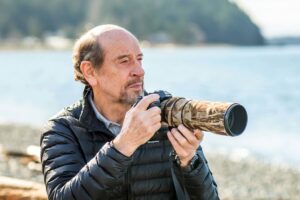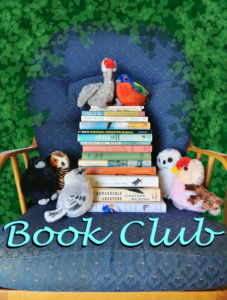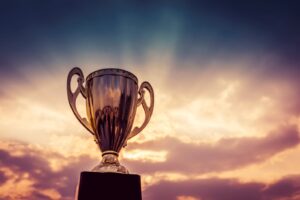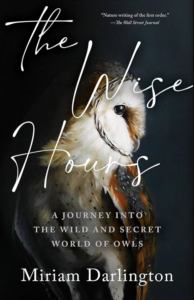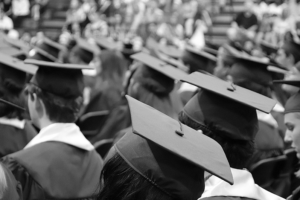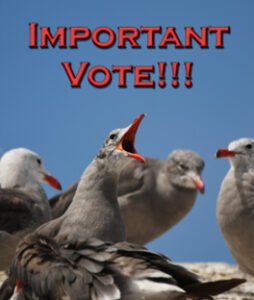Bob Wadsworth – October 9, 2020
Map: LBA Woods Trail eBird
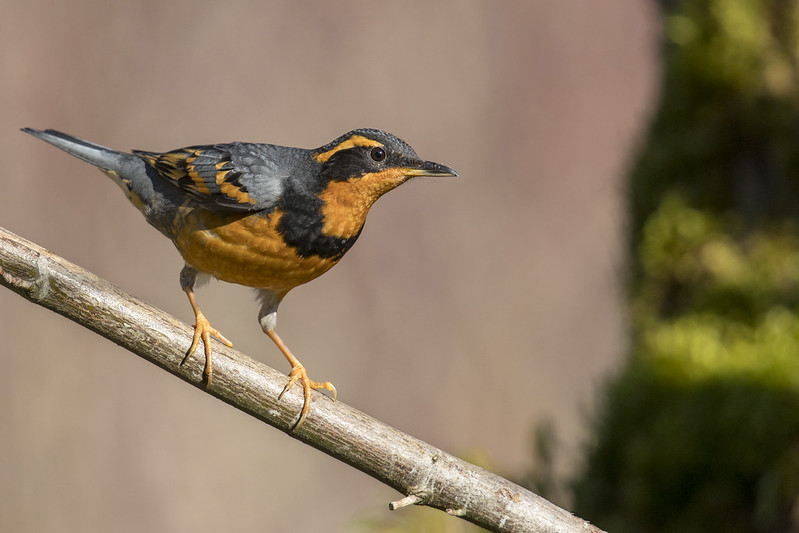
ADDRESS OF LOCATION
The closest address is 3428 Amhurst St SE (for GPS address search). It’s in Southeast Olympia near the intersection of Boulevard and Morse-Merriman roads.
PARKING
The small parking lot is located at the end of Amhurst St
PASS NEEDED OR ENTRY FEE
This is a City of Olympia park and does not require a pass or entry fee
HOW CROWDED
On weekday mornings the Woods are nearly vacant. There may be youth baseball in the evenings and weekends.
RESTROOM — yes
LENGTH OF TRAIL
the recommended loop is about 2 miles
CONDITION OF TRAIL
mostly flat with a couple of hills of around 20 ft elevation gain.
WIDTH OF TRAIL — 4-6 ft
TYPE OF HABITAT
several habitats – part shrubland, part conifer/broadleaf forest
WATER AVAILABILITY
fountain near restroom in summer
CELL PHONE COVERAGE — good
BEST BIRDS SEEN
winter migrant sparrows, Varied Thrush, goldfinches, hummingbirds, Cedar Waxwings.
OTHER IMPRESSIONS
The next few weeks are good for spotting early winter migrant upland birds. A 10-acre shrubland is excellent for spotting and hearing birds while berries are still available. Current fruit includes crabapple, cascara, Hawthorne, thistle.
BIRDING TRAIL
The recommended loop starts from the Amhurst parking lot. Head towards the Van Epps trailhead and then head south to reach the 10-acre shrubland at the southwest corner of the park. Walk east along the south boundary of the woods and then head north towards the vicinity of the large parking lot. You can return to the start at the small parking lot either along the running trail on the border of the ball fields or on a trail through the woods.
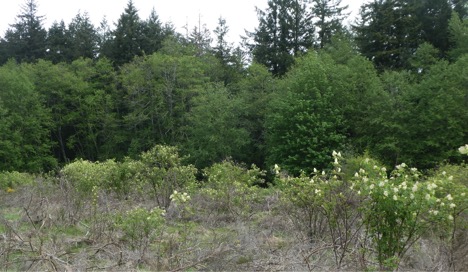
DETAILS: Looking at the map, you can see the Amhurst parking and trails that work towards the Van Epps Street Trailhead. The trail continues in a southerly direction avoiding the Treehouse shown on the map. The forested trail going to the shrubland and in the shrubland itself are good places for birds. The shrubland has crab apples, cascara, and hawthorn in fruit and thistle seed, all attractive to a number of bird species.
Continuing through the shrubland you will reach a left turn that heads east towards the forest. This turn is before reaching a large field and natural gas facility. Once in the forest, keep to the right as you meet several forks along the way. As shown on the map, this trail continues along the southern perimeter of the forest and you will see the back yards of a few houses. The trail eventually “T”s at a north-south trail which you take to the left (north). This trail goes to the trail hub with several “spokes”. The one you want heads towards the Philosopher statue and the large parking lot. To return to the small parking lot, head west on the running path along the ball fields and the Philosopher statue. There is a spoke trail heading west out of the hub area that can get you to the small lot but unless you are experienced with park trails, there are some confusing portions at the west end and you may wind up off track.
My favorite birding spot is in the 10-acre shrubland. The segment from the Van Epps trailhead to the shrubland is also good. The rest of the trail, through the forest, has more scattered birding opportunities, which are different than in the shrubland because they are forest species.
The wooded area between Van Epps and the shrubland attracts woodpeckers because a number of trees are dying or dead of root rot. You should get chickadees, Bewick’s wrens, nuthatches, towhees, perhaps an owl and other forest birds.
Once you enter the shrubland you will see a totally different habitat. Though it is called a scotchbroom patch, there are a number of other shrubs that are attractive to birds in large numbers. Currently crab apples, cascara, and hawthorn have ripe fruit. These fruiting trees attract House Finches and Cedar Waxwings. Golden-crown Sparrows and Fox Sparrows recently arrived from their summer sites. Juvenile Red-tailed Hawks are still around after being raised in the vicinity. Pine Siskins and Red Crossbills are after conifer cones and alder fruit in a large tree to the west of the shrubland. Mourning Doves, Eurasian-collared Doves and Band-tailed Pigeons may fly overhead. Flocks of Bushtits and woodpeckers occasionally show up. Anna’s Hummingbirds are always there. You may see goldfinches eating thistle seed.
In the forest, look for Red-breasted Nuthatches, towhees, Pacific Wrens, Hairy, Downy and Pileated Woodpeckers, Red-breasted Sapsuckers, Brown Creepers, Song Sparrows, Hutton’s Vireos, Sharp-shinned and Cooper’s Hawks. We are also seeing recently arrived Varied Thrushes plus Golden-crowned and Ruby-crowned Kinglets.
The link below shows a map of the LBA Forest provided by Larry Dzieza.
https://sites.google.com/view/stoptheroad/trail-map
BEFORE YOU GO:
Before heading off for a birding adventure, here are some things to consider –
1. It’s always best to have a partner with you – both to maximize the joy and to minimize the risks. BHAS cannot ensure that these locations are totally safe.
2. Don’t forget to bring your mask and hand sanitizer. Have your mask handy and put it on when passing another person not in your party.
3. Leave valuables at home.
4. Check the weather and the bird reports before heading out. An easy way to check what birds have been seen is through Birder’s Dashboard http://birdingwashington.info/dashboard/. It is a simple way to research a species, place, or checklist.


